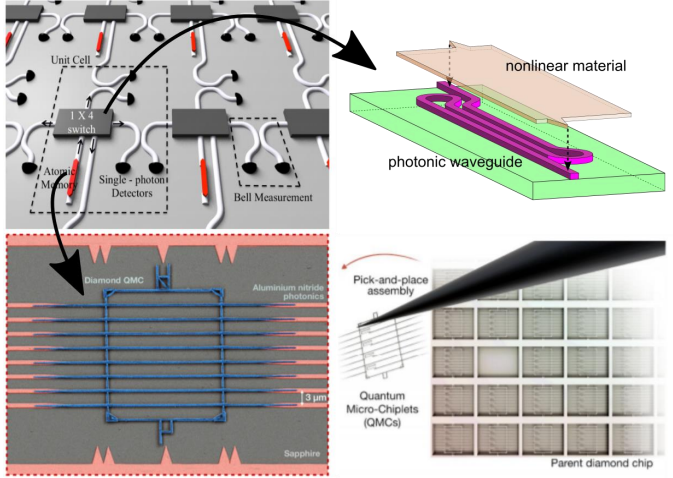Modular quantum photonics
Contact: Carlos Errando Herranz (c.errandoherranz@tudelft.nl)
Quantum photonics provides a promising route towards quantum communication, computing, and simulation. A quantum photonic system must consist of sources, tunable photonic elements, detectors, nonlinear elements, and memories. However, combining these into a scalable system has not been possible because of incompatibility of materials and devices. We recently took a first step towards solving that problem by using a home-built nanomanipulator to integrate 128 diamond single-photon sources onto a photonic circuit [1]. We want now to build on this method to make it more efficient and widely applicable to all the key modules.
There are several Master Thesis opportunities within this project. Examples are:
- developing a semi-automated setup for efficient transfer-printing of photonic components (e.g. following [2]),
- developing a module library of high-quality materials and devices (such as quantum-dot single-photon sources, nonlinear crystals, photonic crystals, and single-photon detectors), and
- building a quantum photonic system on top of a commercial photonic chip and characterizing it.
Such a system may enable thousands of qubits for quantum communication and high-fidelity optical quantum logic gates for quantum computing, and ultimately bring quantum technologies closer to applications.
Student profile: Independent, comfortable with experiments, hard-working. Background: Electrical and mechanical engineering, computer science, physics, optics.
[1] N. H. Wan, et al., arXiv:1911.05265 [quant-ph] (2019)
[2] J. McPhillimy, et al., Opt. Express 26, 16679-16688 (2018)
